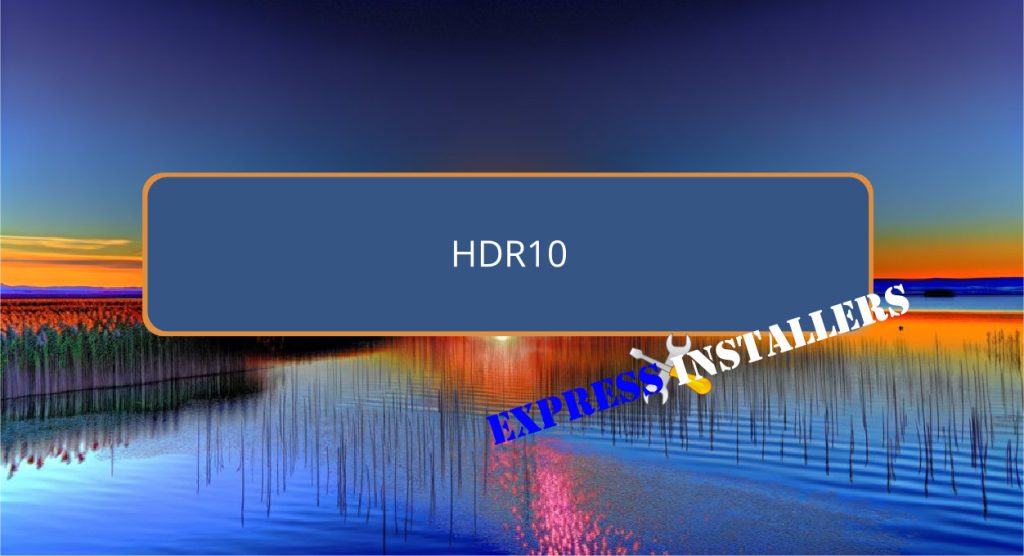
HDR10 technology, defined by SMPTE ST 2084, boosts your viewing experience by utilising static metadata to optimise display settings, supporting a 10-bit colour depth and achieving a peak brightness of 1000 nits.
You’ll enjoy richer colours and deeper contrasts, thanks to its compatibility with the wide colour gamut of BT.2020.
Commonly adopted by major manufacturers like Sony and Samsung, and enhancing platforms from OLED displays to gaming consoles, HDR10 is a cornerstone of high dynamic range content.
As you explore further, you’ll discover how it compares with other HDR formats and its growing impact across the entertainment industry.
Quick Summary
- HDR10 is a high dynamic range technology that supports 10-bit colour depth and peak brightness up to 1,000 nits.
- It utilises static metadata, primarily MaxCLL and MaxFALL, to optimise display settings for consistent HDR quality.
- Adopted widely by major manufacturers such as Sony, Samsung, and LG, enhancing visual experiences on various HDR-capable TVs.
- HDR10 is part of the SMPTE ST 2084 standard and competes with other HDR formats like HDR10+ and Dolby Vision, which offer dynamic metadata.
- For TV Wall Mounting and cable concealing in all wall types? Fill out the Form Below for instant quotation and same-day/ next-day TV wall mounting service.
Understanding HDR10 Technology
HDR10 technology, defined by SMPTE ST 2084, is the industry standard for high dynamic range (HDR) in modern visual displays.
This HDR format employs static metadata and boasts a peak brightness of 1,000 nits. With a 10-bit colour depth, it enhances dynamic range, enriching video content on HDR-capable TVs.
Despite its limitations in adapting scene-by-scene, HDR10 content remains widely popular and broadly supported.
Technical Specifications Explained
Delving into the technical specifications, HDR10 capitalises on the Electro-Optical Transfer Function (EOTF) defined by SMPTE ST 2084, commonly known as PQ, to greatly enhance the brightness and contrast of your video content.
It supports a wider colour gamut with BT.2020, and uses static metadata, including MaxCLL and MaxFALL, to optimise colour volume and peak brightness, achieving a high dynamic range in video.
HDR10 Adoption and Support
Major manufacturers like Loewe, Dell, LG, Samsung, Sharp, Sony, and Vizio have embraced HDR10, ensuring it’s compatible with a wide array of HDR-capable displays.
- Vibrant colours on OLED TVs
- Enhanced gaming on PlayStation and Xbox
- Richer details in HDR content
- Consistent quality across various TVs
- Static metadata ensuring broad support
The Consumer Electronics Association’s guidelines boost HDR10’s presence in your favourite devices.
While HDR10 is widely adopted, it’s important to note that Dolby Vision offers dynamic metadata that adapts brightness and colour levels scene-by-scene for a more immersive viewing experience.
Comparing HDR Formats
While each HDR format aims to enhance your viewing experience, they differ considerably in their approach and compatibility.
HDR10, with its static metadata and broad TV manufacturer support, lays the groundwork.
HDR10+ and Dolby Vision, however, use dynamic metadata to optimise each scene.
Dolby Vision goes further, offering higher peak brightness and colour depth, but its content support and compatibility aren’t as extensive as HDR10‘s.
Frequently Asked Questions
Is HDR10 Better Than 4K?
You’re comparing two different enhancements. HDR10 boosts colour accuracy and contrast, offering vivid visuals, especially in gaming and on compatible displays. Meanwhile, 4K increases resolution but doesn’t enhance colour or contrast like HDR10 does.
What Does HDR10 Do?
HDR benefits your viewing by boosting colour depth, brightness levels, and contrast enhancement. It elevates your gaming experience and streaming services, ensuring compatibility with displays and wide content availability, greatly improving overall visual quality.
What Does HDR10 Mean on Xbox?
On your Xbox, HDR enhances gaming visuals, boosting colours and contrasts. You’ll need an HDR-compatible monitor and proper settings adjustments for optimised performance, ensuring an immersive experience with visually stunning HDR content.
Is HDR10 Better Than Dolby?
You’re weighing HDR10’s advantages against Dolby Vision? Consider streaming quality, gaming performance, and TV compatibility. HDR10 excels in content availability and hardware ease, while Dolby offers superior colour accuracy and brightness with dynamic metadata.
Conclusion
You’ve now explored HDR10 technology, from its technical specs to its widespread adoption.
You understand how it stacks up against other HDR formats.
With this knowledge, you’re better equipped to choose the right tech for your viewing pleasure.
Remember, the choice of HDR can greatly enhance your visual experience, so consider your options carefully.
Immerse yourself in the world of enhanced contrasts and vibrant colours with HDR10, and see your favourite content in a whole new light!
